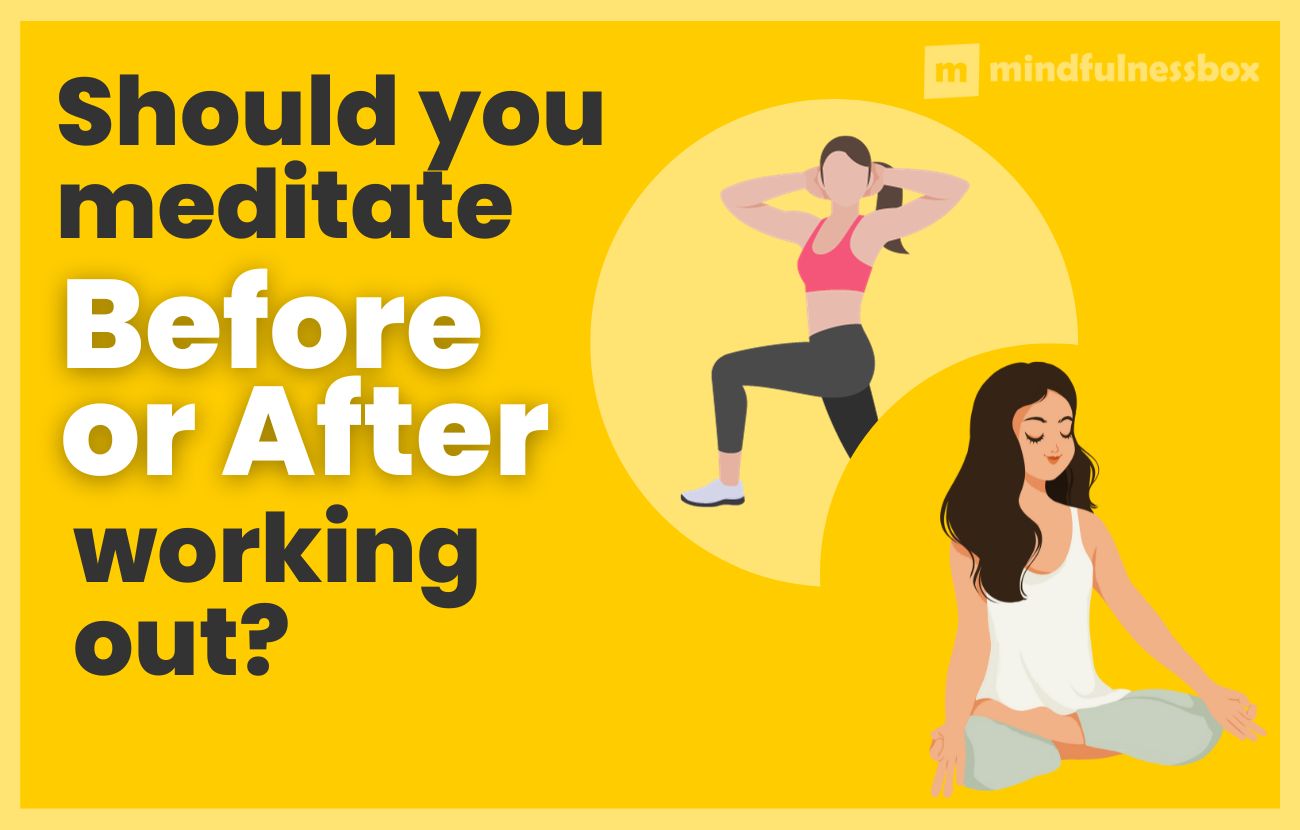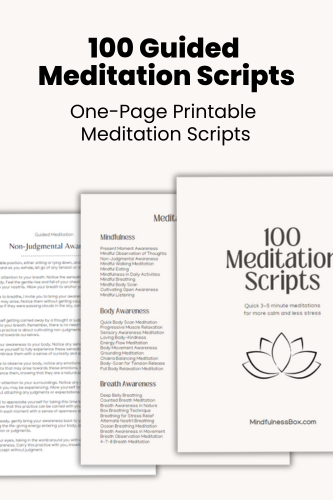Is the best time for meditation before or after a workout? The short answer is that both options are totally fine. Preferably, you should do them in whichever order helps you keep both habits going long-term.
Meditation and exercise in the morning is often seen as the ideal routine to prepare both your mind and body for the day ahead.
These 100 meditation scripts were created to help beginner and intermediate meditators practice key mindfulness concepts like self-love, forgiveness, gratitude, and inner peace.
Designed to fit into busy schedules, each meditation script lasts 3-5 minutes. Perfect for starting or closing a group meditation; for yoga, coaching, or therapy sessions; or for your personal meditation practice.
But should you meditate before or after exercise?
While both are perfectly fine—meditation after a workout or meditation before a workout—you may prefer one or the other based on your energy levels, based on the specific type of exercise you’re doing, or based on your performance or cool-down goals.
Let’s explore some different ways to look at this question.
Should you meditate before or after a workout?
In this section, I’ll walk you through scenarios where it might make sense to do either meditation or exercise first in the morning.
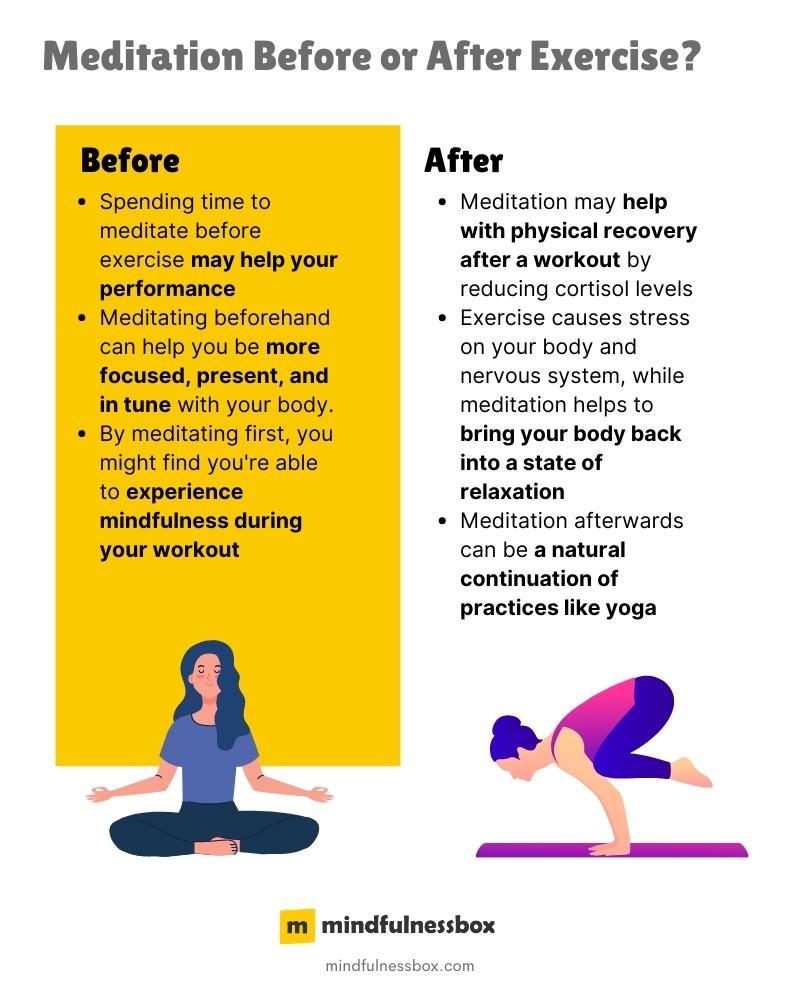
1. When to meditate before a workout
The team at Livestrong, including Aubrey Bailey, a doctor of physical therapy, recommends meditation before exercise.
The logic is that spending time to meditate before exercise may help your performance. Also, many people stretch before working out anyway, so it might make sense to add meditation into the mix.
Another angle to consider is to look at this from a mindfulness perspective. Mindfulness meditation guides the meditation practice of focusing on the breath and bringing attention to your current state of mind.
If meditation before exercise helps you be more focused and present and in tune with your body, this could help with your performance during exercise.
You might also find yourself bringing your mindfulness practice into your exercise experience: paying attention to your breath and staying present during a run, for example.
2. When to meditate after a workout
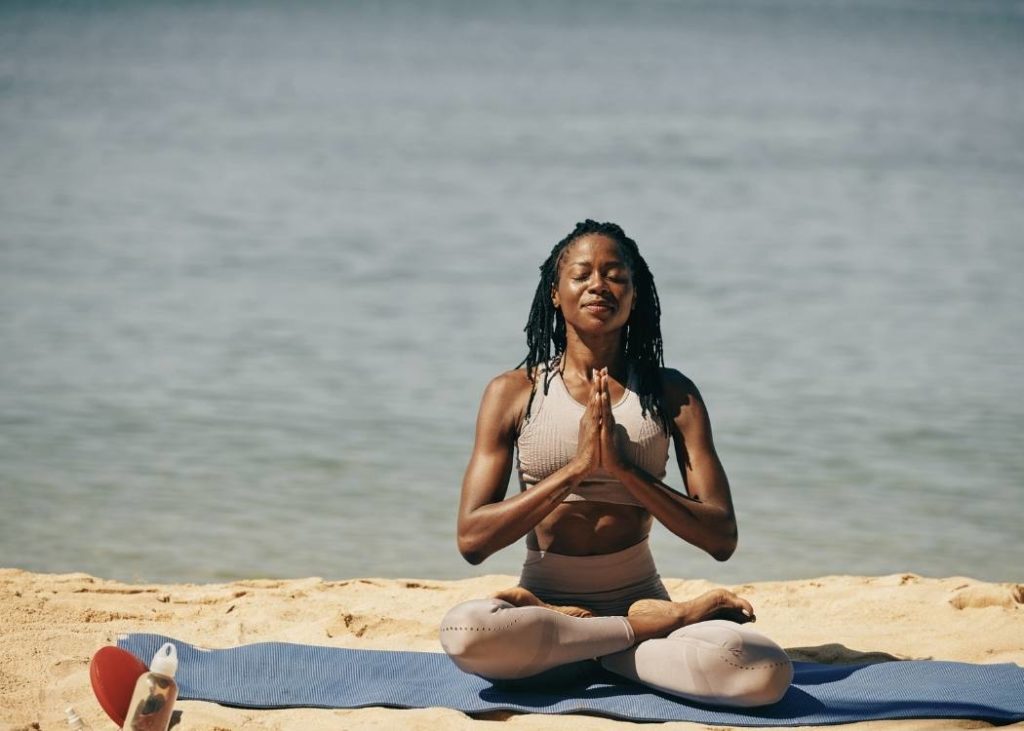
On the other hand, there are other reasons you might want to schedule a post workout meditation.
Most commonly cited is the possible benefit to physical recovery from meditating after exercise. Meditation has been shown to help reduce cortisol levels, which increase after exercise.
If meditation helps to bring down your cortisol levels, it could mean that your muscles recover from exercise more quickly.
As described by Headspace, “If exercise causes stress on your muscles and nervous system, then you should see mindfulness as your ticket to physical relaxation (the opposite of stress) and, therefore, accelerated recovery.”
Meditation expert Giovanni Dienstmann has taught thousands of meditators. He recommends meditating after exercise:
“If you don’t feel too exhausted after your exercise, I’d recommend you meditate after. But give it a few minutes for your body to calm down, before you start your meditation.”
Meditation before or after running, yoga, and lifting weights

Different exercises have slightly different considerations. Let’s look at a few common activities.
1. Should I meditate before or after running?
Meditating before running may be the better choice.
Running is a high-intensity activity that gets your heart rate up, so you may find it hard to settle down after a workout. Meditating before your run can prepare you for the run ahead, and help you stay mindful during your workout. You can also incorporate meditation into your stretch routine.
2. Should I meditate before or after yoga?
Most people recommend meditating after yoga.
Traditionally, yoga is a preparation for deeper meditation activities. Most yoga techniques are relatively gentle, so it’s a good way to move your body in the morning to prepare it for sitting still during meditation.
3. Should I meditate before or after lifting weights?
Lifting weights is highly taxing on the central nervous system, so you will probably benefit from meditating after your weight lifting session.
Meditation can reduce the levels of cortisol in your body, and a regular meditation practice may help your muscles recover faster.
Meditate or exercise first? It’s unique for everyone
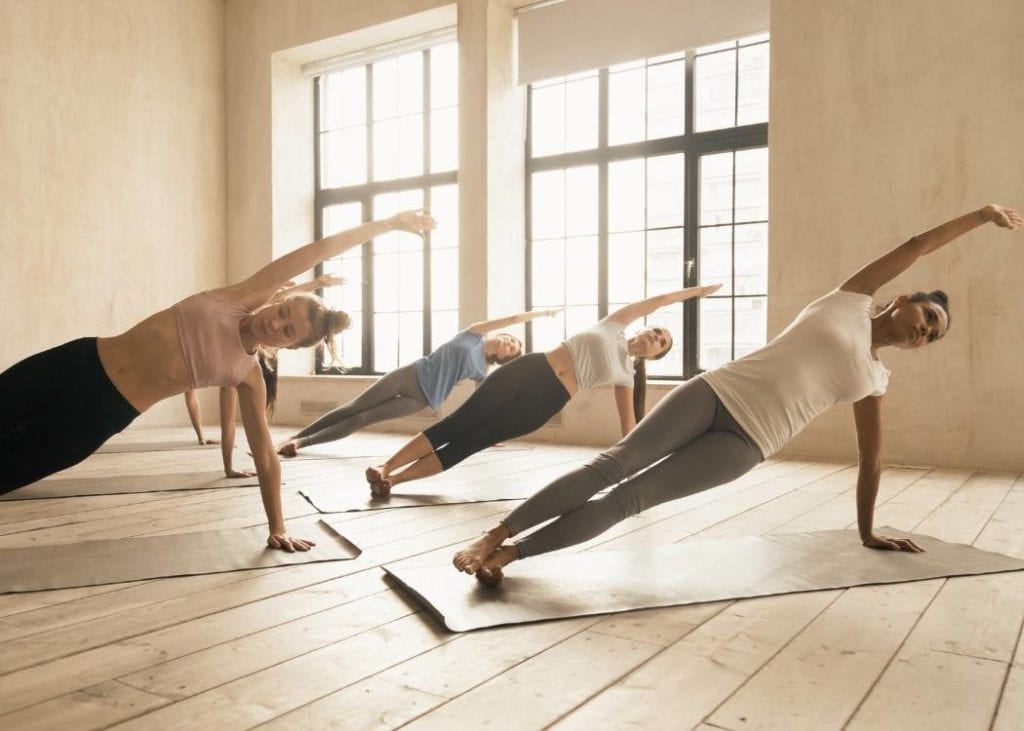
The website Coach.me collects individual responses to common fitness questions. There were a variety of responses to the question “Should I meditate before or after exercise?”
In support of meditation before exercise
“I always finish the meditation part first and continue with my exercise. I want [to make] my mind strong and continue with my other tasks. Also after mediation, you can work on ‘Positive affirmations’.”
– Kavitha V.
“I’d say [meditation] before then stay in the mindset for your routine. Focus on the slow intense movements so that it is an extension of your meditation practice.”
– Susan A.
“I’ve found when I meditate after I exercise – my body is too energetic to calm down.”
– Crystal M.
In support of meditation after exercise
“I’ve found that after doing some medium to intense exercise, like running, my body is full of endorphins and it is easier for me to perform some gratitude practice because of that sense of well being. After that, just a few minutes later, my mind is calm enough and I perform a body scan meditation technique focusing my attention to the sensations of my body, still warm from the exercise.”
– Luis F.
“Meditation after exercise is a good way to cool down and use your breathing and awareness to unwind from the workout.”
– Amber M.
Learn how to keep yourself motivated
When building or maintaining a healthy habit, you need to do whatever it takes to keep yourself motivated. Getting up early to meditate and exercise can be hard.
Ask yourself how you can best keep this habit going long-term.
Is it easier for you to get the “hard part” out of the way first? For many people, that’s exercise, since it requires the most effort and the most energy.
Or, is it easier to ease into the day a little more gently, giving yourself more time to wake up your mind and warm up your body? In that case, it might be preferable to meditate first.
Experiment with your routine
There are a few things to keep in mind when deciding whether to meditate before or after exercise.
If you meditate before exercise, you may find yourself better able to ease into the day and to make your exercise routine an extension of your mindfulness practice. A drawback is that you miss the chance to use meditation as a cool-down exercise after your workout.
If you meditate after exercise, you may find that your body has too much energy to settle into meditation. However, if you wait a few minutes to come back to a place of calm, you should be able to complete your meditation practice as normal, and you may also get some cool-down and muscle recovery benefits.
Meditating before or after exercise is a personal choice, and there’s no wrong answer. Whatever keeps you meditating and exercising is a good thing.
Experiment! Find what works best for you.
Frequently asked questions
What to do first, meditation or exercise?
While meditating either before or after working out is fine, there are some variables to keep in mind.
For example, what type of exercise are you doing? If it’s a strenuous exercise, you may prefer to use meditation as a cool-down afterwards. If it’s an exercise that requires mental fortitude, you may want to get into the right frame of mind through meditation beforehand.
What are the advantages of meditating before exercise?
Meditating first may help your performance during exercise, according to some exercise scientists. At the same time, meditating afterwards can be a good way to let your nervous system slowly calm down.

My mindfulness practice kicked off in 2016 with a ten-day silent retreat. Since then, I’ve read dozens of books about mindfulness and completed hundreds of hours of meditation. Thinking about what makes humans happy, calm, and peaceful is endlessly fascinating to me.

